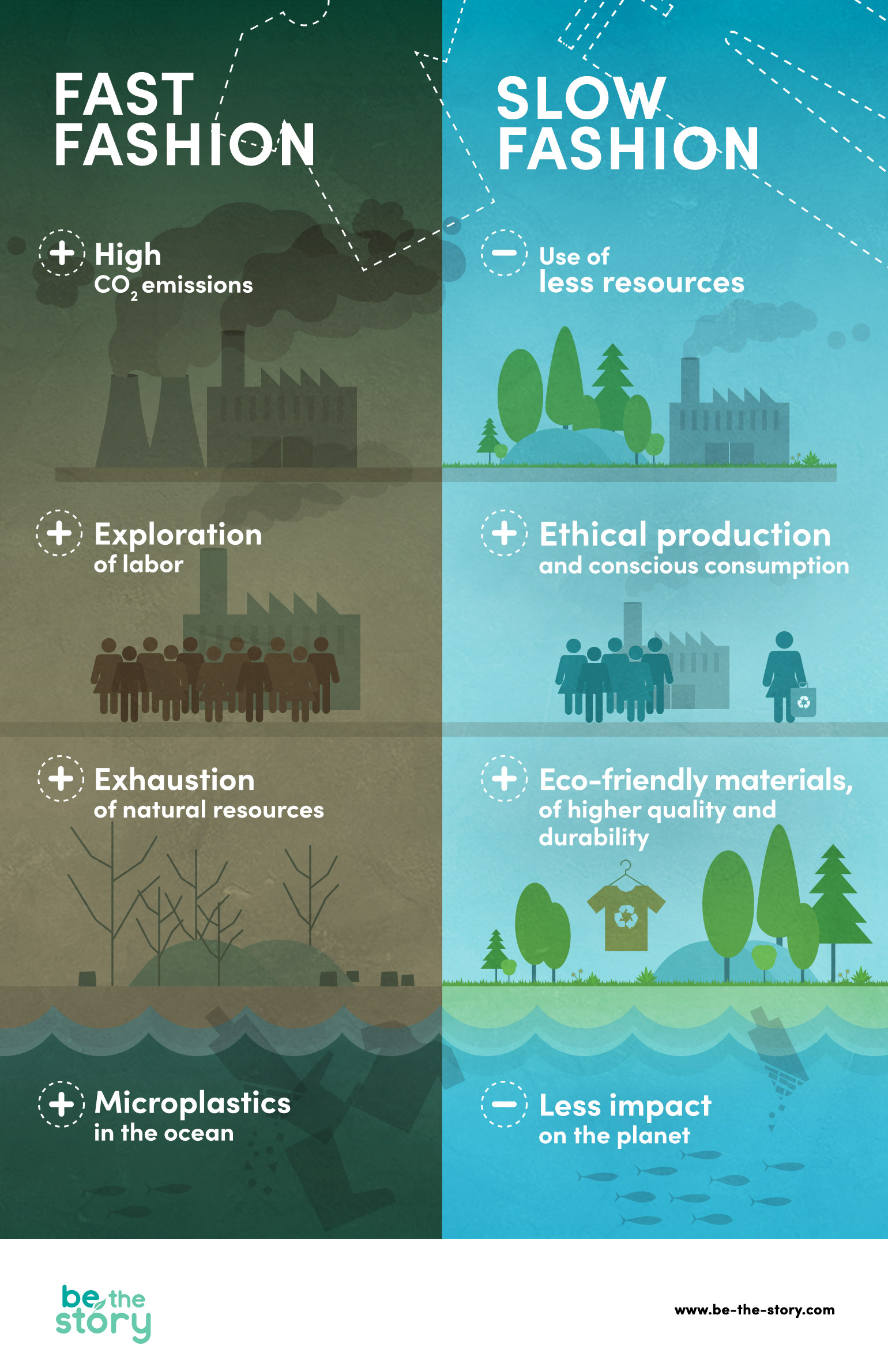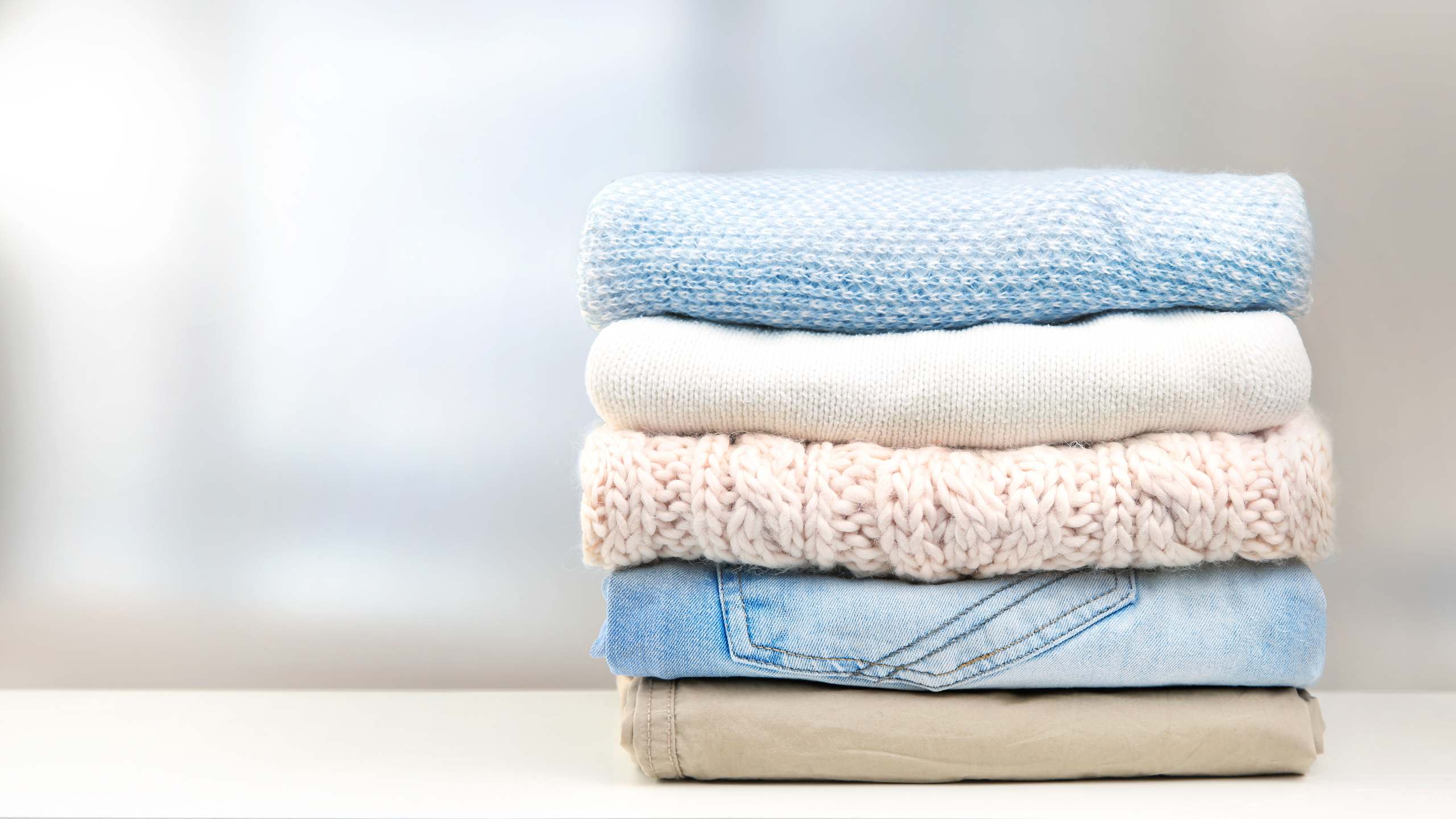The skeletons in your closet
The change in season invites us to refresh our wardrobes to match warmer temperatures and the latest fashion trends. However, doing so may also harm the environment and contribute to social inequalities. Have you ever wondered how certain pieces of clothing can be so cheap? Or how come new clothing collections are created in such a short time? The answer is fast fashion.
Estimates point to 100 billion garments being produced every year. Most clothes are used only 7 to 10 times before being thrown away, contributing to about 92 million tons of clothing ending up in landfills, year after year.
This mass production in the fashion industry has consequences for the planet and those living in it. As such, it is important to be aware of the real impact of each item inside your wardrobe.
Did you know sustainable clothing is one of the cornerstones of circular economy?
The actual cost of fast fashion
According to a study by the Ellen MacArthur Foundation, the fashion industry uses mostly non-renewable energy sources (such as oil) to produce synthetic fibres, fertilizers for growing cotton, and textile dyes. These materials release large amounts of carbon dioxide and other pollutants into the atmosphere, increasing the ecological footprint of the textile sector.
By the way, the fashion industry alone is responsible for more greenhouse gas emissions than all air transport and maritime shipping combined. Besides, the entire process uses a large amount of water, a precious and scarce resource.
Only around 1% of all discarded clothing is recycled and transformed into new garments; the vast majority, about 75%, are burned or incinerated, releasing carbon dioxide into the environment, yet again, at the end of the products’ lifecycles.
Doing your laundry, for instance, releases microplastics which wash up in the oceans, damaging biodiversity and contaminating food chains.
At the same time, to be able to launch thousands of new models during the year, several times a year, and at low prices, working conditions in the apparel industry are often precarious. Just imagine the long working hours, the low wages, and the exposure to toxic materials. The lack of transparency of some brands on these issues raises human and labour rights issues, such as child labour, forced labour or respect for health and safety rules.
The actual cost of fast fashion is thus much higher than what the consumer pays. The planet, and the disadvantaged communities where much of this clothing is produced, foot most of the bill.
Just like the season, why not change habits?
There are obvious alternatives to fast fashion such as using more renewable energies, reducing, or eliminating the usage of toxic materials and chemicals, and practising a more moderate consumption. Using garments and footwear more often, and choosing transparent brands and products, and implementing an effective recycling system for these materials are also great small steps to take.
This has led to the emergence of fast fashion’s antagonist, slow fashion. Slow fashion revolves around sustainable clothing whose production, use and life cycle, including end of life, have reduced impact on the environment.
The main advantages of this type of production are fewer resources used and the production of less pollutants and CO2. In addition, sustainable clothing represents minor or null toxic or microplastics emissions, and can be recycled.

Fast Fashion: High CO2 emissions, exploration of labour, exhaustion of natural resources, microplastics in the ocean; Slow Fashion: use of less resources, ethical production and conscious consumption, eco-friendly materials, of higher quality and durability, less impact on the planet.
To help you choose the right fabrics, look for these materials on the labels:
- Natural materials from organic production (such as cotton, linen, hemp fibre, bamboo, cork);
- For those who are comfortable in choosing materials of animal origin, prefer sustainable productions such as wool (sheep, merino, alpaca, cashmere, camel, yak) or silk;
- Recycled materials (polyester, cotton, plastic);
- Reused materials (production surpluses, leather);
- New sustainable materials (“vegan wool” made from vegetable fibres, imitation leather made from fruit peels, vegan alternative to silk, Lyocell).
10 tips to refresh your wardrobe sustainably
-
Check what you already have
The first step to refresh your wardrobe is to check which clothes, shoes, and accessories you already have. Take every garment out and arrange them on your bed, for example. You may realize that you have more things than you thought, or that you have clothes you no longer use.
-
Repair what you can
Some items may just need a little fixing to get back into shape. Identify which garments you can repair yourself or with a little professional help in case you want to keep them. This way, you can avoid buying new pieces of clothing and reduce your ecological footprint. A few torn stitches or a missing button are easily repaired, as well as a loose shoe sole, a scuff, or even a small tear.
-
Donate or recycle what you don’t use
Among the pieces in good condition, how many will you really ever use again? Donate those clothes you don’t want to keep to a social or charitable organization – or even to friends or family. You have probably walked by a clothing collection container many times – next time, throw your unwanted clothes and shoes in there; they will be donated to charity or sent for recycling.
-
Change and transform your clothes
In case you own pieces of clothing or shoes you no longer identify with, but have something you like about them (colour, pattern, material), why not turn them into an upcycling project? A shirt can become a vest, a pair of trousers becomes a skirt or even shorts, a jumper makes for a warm beanie… and more.
-
Think twice before buying
Now that you have organized your clothes, ask yourself: do you really need to buy more? A seasonal wardrobe typically consists of 25 to 50 pieces, including clothing, footwear, and accessories, excluding underwear. With this many clothes, you can make enough combinations to use a different outfit for weeks! And with sustainable clothing, your wardrobe can last for years.
-
Prioritise natural and quality materials
Although the price of clothes with lower quality is tempting, they will wear out quicker, and will need to be replaced earlier. In the long run, it’s more expensive – for both your wallet and the planet. Prefer sustainable clothing made of natural, durable, and ecological materials, as much as possible.
-
Buy second-hand
If you have never tried second-hand clothes, give it a chance. A quick visit to a second-hand shop, be it a charity or one of the many websites and apps for buying second-hand clothing and footwear, can reveal many quality items in great condition. Adding second quality pieces is a great way to refresh your wardrobe.
-
Choose responsible brands and shops
Besides second-hand shops, choose national (or local) and responsible brands whose garments are sustainably produced, for example handmade pieces or clothes made from surplus textile from other productions. An example of a sustainable brand that combines fashion with the concept of circular economy is Vintage For A Cause, a project made in Portugal. You can also check out the Fashion Revolution’s annual report, which analyses the operations of 250 fashion brands and retailers worldwide.
-
Create a capsule wardrobe
In a capsule wardrobe, all the pieces of clothing are interchangeable and can be used in rotation without having to repeat sets – 9 pieces are enough to get started! The secret is to incorporate pieces with timeless style, sober colours, and toned-down patterns. The goal of a capsule wardrobe is to maximize the number of combinations with as few items of sustainable clothing as possible.
-
Get creative
The last tip is simply to use your imagination! A piece of clothing with an ugly, permanent stain can become much more than just a duster. Clothes can be worn in more than one season, with different combinations and accessories. Revaluate and refresh your wardrobe through a creative lens and you will be surprised by the results.
Check out tips for an eco-friendly spring, and if you haven’t adopted the 12 resolutions to reduce your ecological footprint yet, there is still time to do so.



